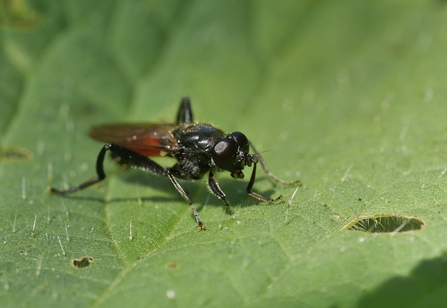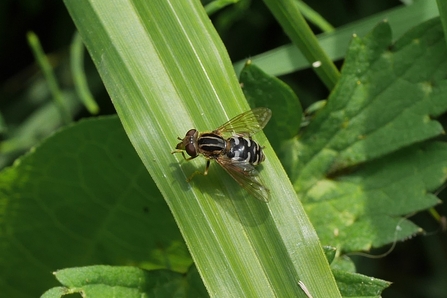Hoverflies are a fascinating group of flies, relatively well known for their role in pollination, but much less well known for their interesting biology and role as habitat indicators. Let’s get this straight – I’m no hoverfly expert, what follows is a quirky look at some of these intriguing insects, focussing on those species that have been recorded from our nature reserves. I hope you enjoy it!
Old Woodlands
Crimson-belted Hoverfly (Brachypalpoides lentus) as its name suggests this beautiful looking hoverfly has a striking looking band of crimson occupying the majority of its abdomen. This species is associated with old trees particularly in our area Oak where the larvae develop in the decaying heartwood of live trees. Adults can be seen from April to September. Of our nature reserves Danemead is the best place to spot this species.
Golden-tailed Leaf-licker (Xylota sylvarum) another stunning looking hoverfly associated with woodlands. The larvae develop in rotting wood including, tree roots, stumps and fallen trunks. The best places to spot one are on sunny areas foliage or tree stumps in the spring and summer. This species doesn’t visit flowers.
Orange-belted Plumehorn (Vollucella inflata) another species that favours old woodlands. This one requires sap runs created by the larvae of saproxylic beetles to lay its eggs in, which means if this species is present there’s a very good chance of some interesting species of beetle are present too. Elsewhere in the country it uses sap runs created by Goat Moth, but that species is now thought to be extinct in our area. Adults can be found visiting the flowers of Hawthorn and Bramble amongst others. Again, Danemead is our best reserve to spot this species.



